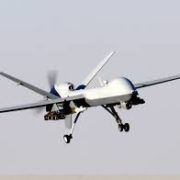As the violent images of Ferguson, Missouri permeate the media, a debate has erupted about the “militarization of police.” Strangely, this controversy might affect the utilization of Unmanned Ground Vehicles (UGV) by Public Safety departments. The same federal program – Defense Logistics Agency (DLA) 1033 – that delivers riot shields and automatic weapons to police departments for free, also distributes UGVs.
Basically, the feds are transferring extraneous equipment, including UGVs, from the military to the police. Cash-strapped police departments love this. Others not so much.
Some UGV developers have complained that the free robots dampen their market. Others in the unmanned community have pooh-poohed this idea by claiming that the UGVs being offered by the 1033 program are old, obsolete and/or too banged up to be of value.
Many (including some police officers) have been attacking this military-to-police transfer of equipment. They claim that supplying even small, rural departments with automatic weapons and other SWAT staples has led to a more violent, confrontational attitude among the police. A good example of this argument is One Nation Under SWAT, which appeared on Salon.com. (This Salon article does not reflect the opinions of AMREL, the blog, our partners, or our clients. We are linking to it, because we believe that people in the unmanned and Law Enforcement communities should know what is being said in this controversy.)
UGVs, whose only role is to save lives, are likely to be put in the same category as other “militarized” equipment. Knowing the way Washington works, if the 1033 program is scrapped, the era of free UGVs would be over.
AMREL has a number of employees who have experience in the Law Enforcement community. I sent the Salon article to them. This is the reaction of some of them to the “militarization of police” controversy.
- One former officer told me that the militarization of the police is real. It used to be that the only officers that were heavily armed were the ones that belonged to small specialty teams. Most people practiced “community” policing. Now, that situation is reversed.
- There is an arms race between criminals and the police. I heard several stories of times when the police were outgunned. This has led to a preference for lighter, larger caliber weapons.
- Cops like the military-to-police program. “We need automatic weapons,” said one former officer.
So, the essential point of the Salon article is wrong. The distribution of military equipment has not led to a militarization of police. Rather, a militarization of police has led to the acquisition of military weapons.
As unfair as it might be, this debate is likely to affect the acquisition of UGVs by police. Members of the unmanned community would be wise to keep an eye on this issue.
AMREL is the leader in providing Operator Control Units (OCU) for UGVs.
To learn more, contact Rob Culver at robertc@amrel.com or (603) 325 3376
UPDATE:
After reading this blog post, AMREL’s Senior Application Engineer, Javier Camarillo, confirms the suspicions of the low quality of the free UGVs. “I get calls all the time from small police departments, often from non-technical people. They view UGVs as complicated systems with attachments and accessories. They can’t get the them to work, and they can’t afford the parts they need. Sometimes, parts for the older UGVs are unavailable at any price.”
Maybe the 1033 program is actually hindering the adoption of UGVs by Public Safety officials. After all, the distribution of poorly performing equipment is teaching a generation of officers that UGVs are unreliable, expensive to support, and difficult to repair. For a discussion about the cost and value of UGVs, see an earlier blog post, UGV cost & why they should have leather seats.











